Ever marveled at a sleek veneer finish, only to wonder about its drawbacks? Dive in to uncover the lesser-known side of veneer wood!
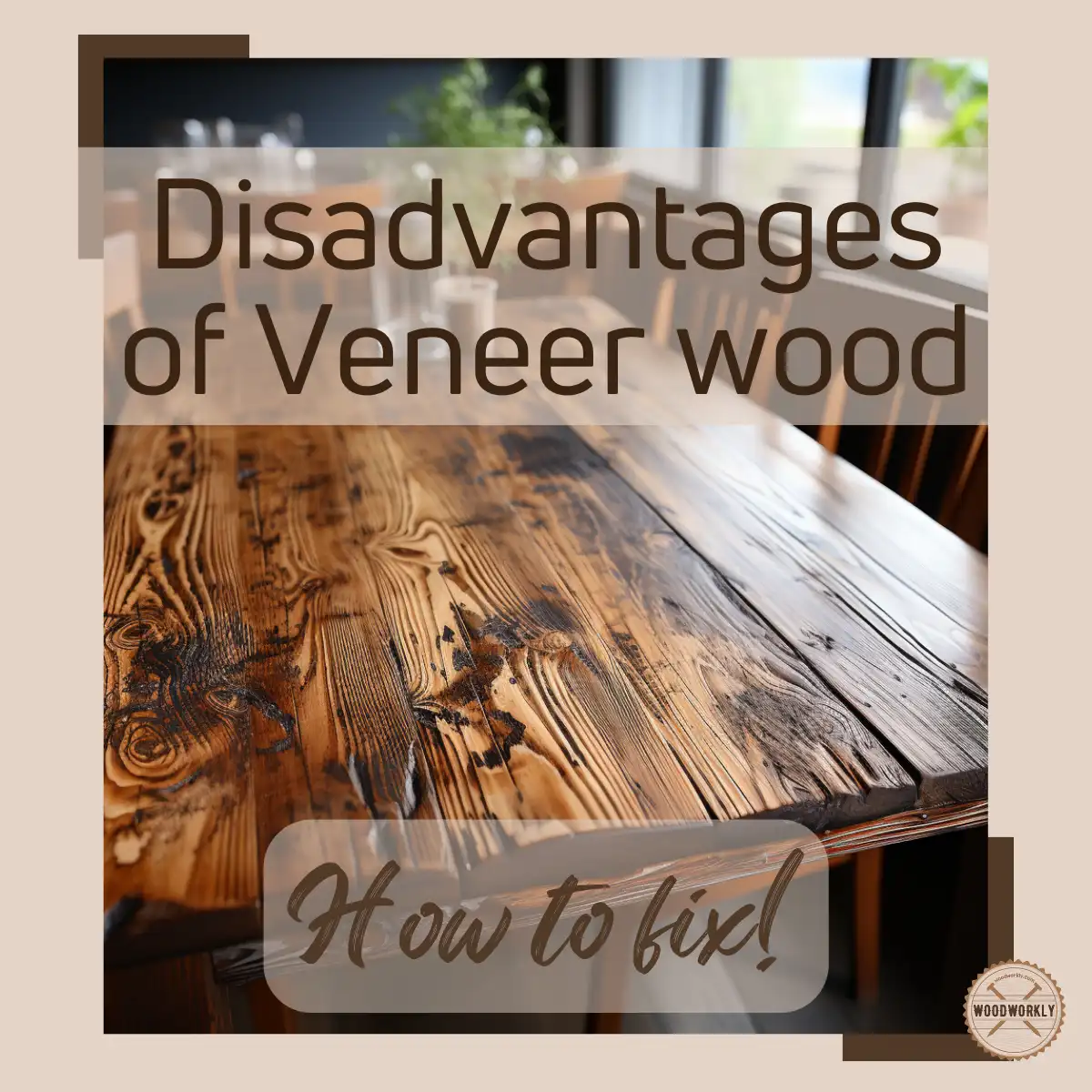
Veneer wood is made by attaching thin slices of natural wood. They have most of the important qualities as solid woods but for a less expensive price.
Veneer wood is widely used for floors, furniture, ceilings, and many other projects.
But on the other hand, it has some drawbacks as well. I did some research to find the cons of veneer wood and able to collect lots of info.
Here’s the list of disadvantages of veneer wood,
- Need regular maintenance
- Susceptible to insect attacks
- Prone to scratches and dents
- Difficult to repair
- Poor durability
- Not like solid woods
- Installation is difficult

In this article, I’ll explore each of the above veneer wood disadvantages in detail and give you the best and simple solution for each of them.
Furthermore, I’ll answer some frequently asked questions as well.

First of all, let’s have a brief look at the advantages of veneer wood and see why it has become so much popular among woodworkers.
Advantages Of Veneer Wood
- Less expensive than solid woods
- High flexibility in designs
- Eco-friendly
- Lightweight
- High strength
- Non-toxic
- Attractive
As you can see, veneer wood is filled with lots of exceptional qualities that are important in various woodworking projects.
With veneer wood, you can get almost the same or better qualities than most solid woods for a cheaper price.
Plus, veneer wood furniture is easy to move because of being so light. This is why it has become so much popular among users.
So, let’s head into the key topic of looking at the disadvantages of veneer wood in detail with fixes.

Disadvantages Of Veneer Wood
Let’s have a look at the disadvantages of veneer wood in detail and how to fix them.
1. Need Regular Maintenance
Not like solid woods, veneer woods need regular maintenance to keep them fresh as new for a long time.
They are made by gluing or pressing several natural wood slices onto particleboard or fiberboard.
Therefore, they don’t have a natural resistance against environmental elements like solid woods like Cedar, Mahogany.
Without regular maintenance and proper care, veneer wood can get easily attacked by moisture, UV light, insect attacks, and many other environmental elements.
Make sure to clean your veneer wood furniture, flooring, or any other woodwork regularly with a soft cloth to remove dust and debris.
Because dust particles easily deposit on veneer wood surfaces and give a dull unpleasant appearance to the wood.
In order to protect veneer wood from moisture and other elements, you need to apply sealant, wood stain, paint, or any other wood finisher properly.
Read to know How to Paint Wood Veneer!
A wood sealant or any other finisher helps to increase the wood veneer’s durability by preventing moisture absorption and repelling bugs and insects which can damage the wood.
Here’re some quality wood finishes for veneer wood,
- Lacquer
- Varnish
- Tung oil
- Danish oil
- Teak oil
With proper sealing or finishing of the veneer wood, moisture cannot penetrate between the wood slices and stop the wood from rotting and decaying.
Apply wood finisher at least once per year to keep veneer wood furniture or woodwork for a long time with no issues.
Because wood finishes tend to fade away over time and you need to keep eye on the finish to reapply before naked wood exposes to the outside air.
But if your veneer wood furniture or woodwork somehow started to rot because of moisture, better to restore the wood using a quality product like Flex Seal.
There’s no use in applying a wood finisher over the surface once the veneer starts to rot internally.
Restoring rotted furniture is a nightmare especially if it is made from veneer wood.
Therefore, maintain, and clean your veneer woodwork and furniture regularly with proper care for the long run.

2. Susceptible To Insect Attacks
Wood veneers get easily attacked by insects, termites, and bugs.
Termites chew the wood veneer surfaces and dig tunnels behind the wood veneer surface to go into the interior structure. This will lose the strength of wood veneer and cause wood to decay quite easily.
Inside the wood veneer is a healthy habitat for insects and termites because the wood veneer is made of natural exotic versatile healthy woods.
Insects spread quickly inside wood veneer and do severe damage to the whole furniture within a few weeks.
Here’re some common insects and pests that damage wood veneer,
- The larval form of insects damages the wood by digging tunnels inside.
- Beetles attack wood veneer heavily.
- Psyllid insect species damage wood veneer by releasing sugary, sticky substances that cause fungi and mold to grow.
You can protect veneer wood from insect attacks by applying sealant or wood finisher like lacquer, varnish, or any other oil finish. Sealing coats repel insects by making a harmful environment for them.
Apply wood finisher all over the wood veneer including small cracks. Chemical substances in wood finish destroy insect habitats and eggs and keep the wood bugs free.
This is extremely useful for outdoor veneer wood furniture since outdoors and gardens are kingdoms of insects.
Apply wood finish or sealant regularly to keep your veneer wood furniture or woodwork protected from insects for so long.
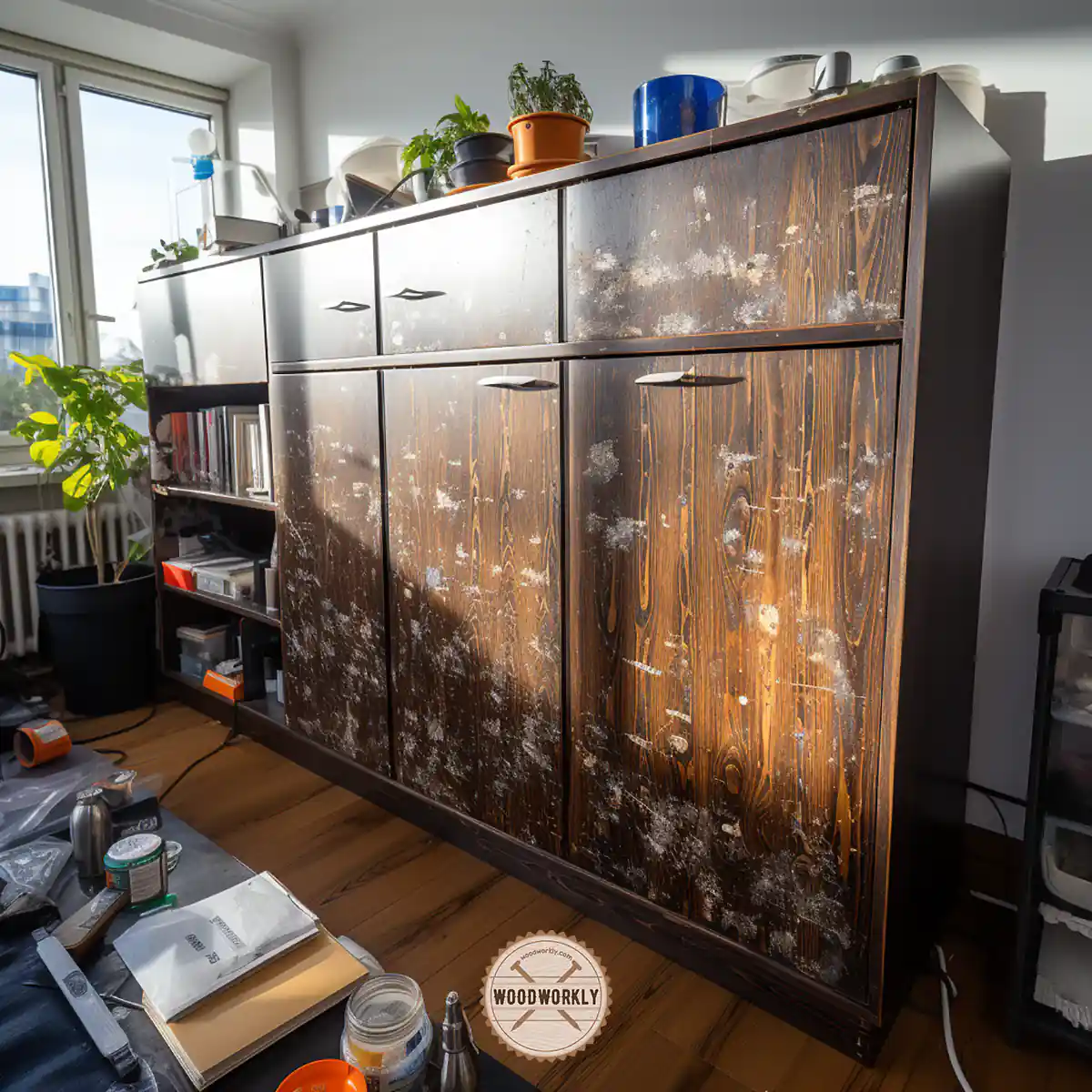
3. Prone To Scratches and Dents
Most of the time wood veneer is softer than solid wood. Therefore, wood veneer furniture and woodwork get easily scratched and dent due to many kinds of impacts.
They are more sensitive towards hard use.
As we already know wood veneer is popular flooring material. but untreated wood veneer cannot handle foot traffic or dog scratches because of its poor resistance against scratches and dents.
The marks will be visible on the surface which can be so hard to remove.
Plus, you need to be more careful when using wood veneer as bathroom countertops.
Wood veneer surfaces get easily scratched and damaged and moisture will penetrate easily into the wood and cause the wood to rot.
If you use wood veneers as kitchen countertops, they have no resistance against the sharp edges of knives and other hard metal equipment.
If the wood gets scratched, there is a tendency of collecting food particles in those areas. That can be a reason for the growth of Bacteria and fungi on your kitchen countertops.
You can protect wood veneer furniture and woodwork from scratches and dents by applying a proper sealer or finisher before using them.
Finishes like oil finish can tolerate scratches and protect wood surfaces from getting damaged.
Apply finisher or sealer all over the wood before using wood veneer for flooring, countertops, and other applications that need to deal with hard and sharp substances like metals.
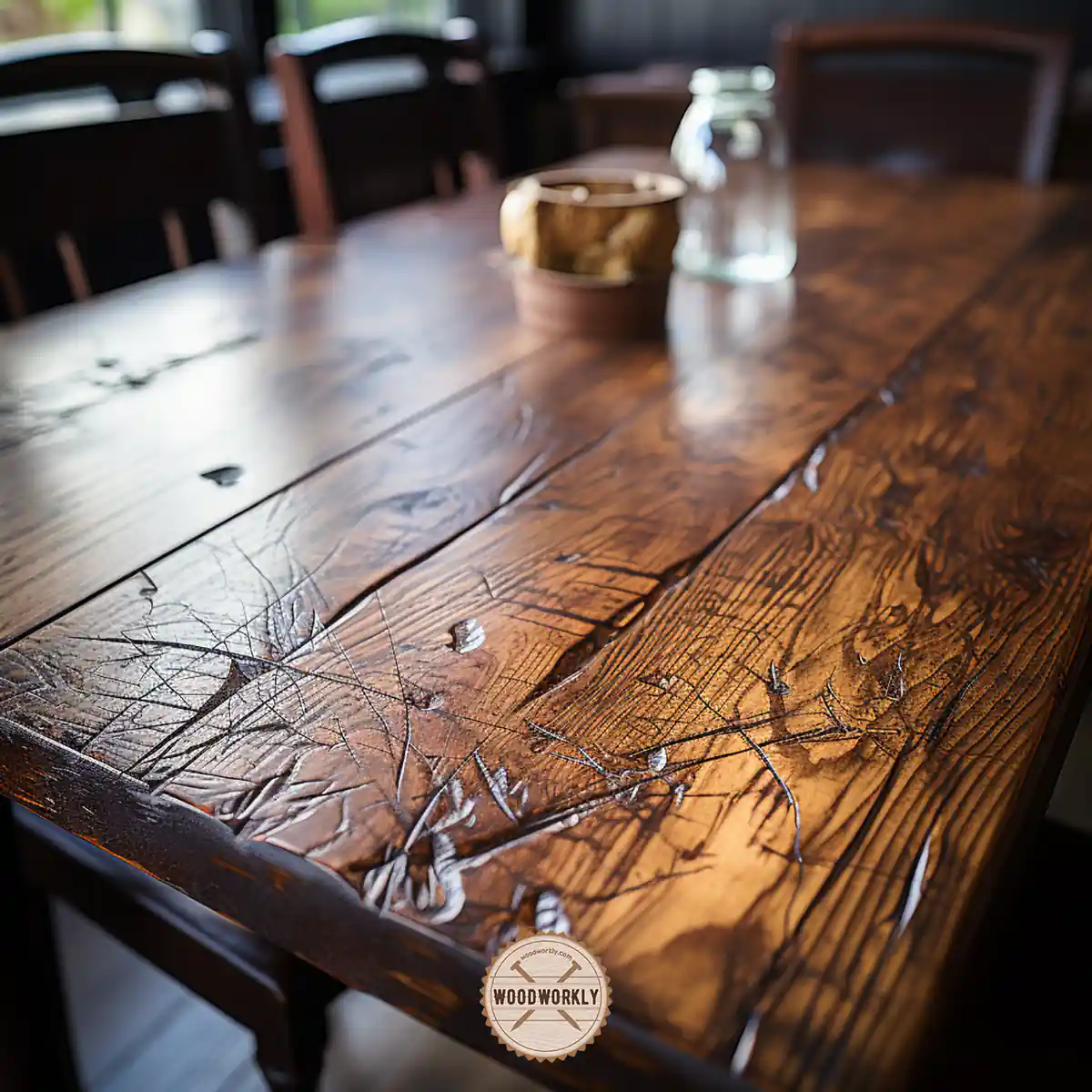
4. Difficult To Repair
Veneer wood is so hard to repair once it gets damaged, broken, splits, or cracks due to various impacts.
Plus, it takes a lot of money to repair veneer wood completely, not like solid wood. Because if the wood veneer gets damaged, the whole surface or wood slice needs to be replaced.
If you have damaged wood veneer furniture or woodwork, it is impossible to repair only the specific area that got damaged.
Because wood veneer is made by compressing or gluing many wood slices into a fiberboard or particleboard and fixing a small area cannot be done.
This is a huge disadvantage compared to solid wood furniture and woodwork.
Because if solid wood gets scratched or cracked you can easily repair the specific area using wood glue, wood filler, wood putty, sanding, or applying wood finish.
That saves lots of time and money.
Even though earlier you have spent so little on veneer wood compared to solid wood when purchasing when it comes to repairing, solid woods are much more cost-effective than wood veneer.
The initial cost of wood veneer is less than solid wood.
But maintenance costs of wood veneer are significantly higher than solid woods because of being non-supportive for repair.
Once veneer wood gets damaged, you cannot repair it by sanding or reconditioning like solid wood.
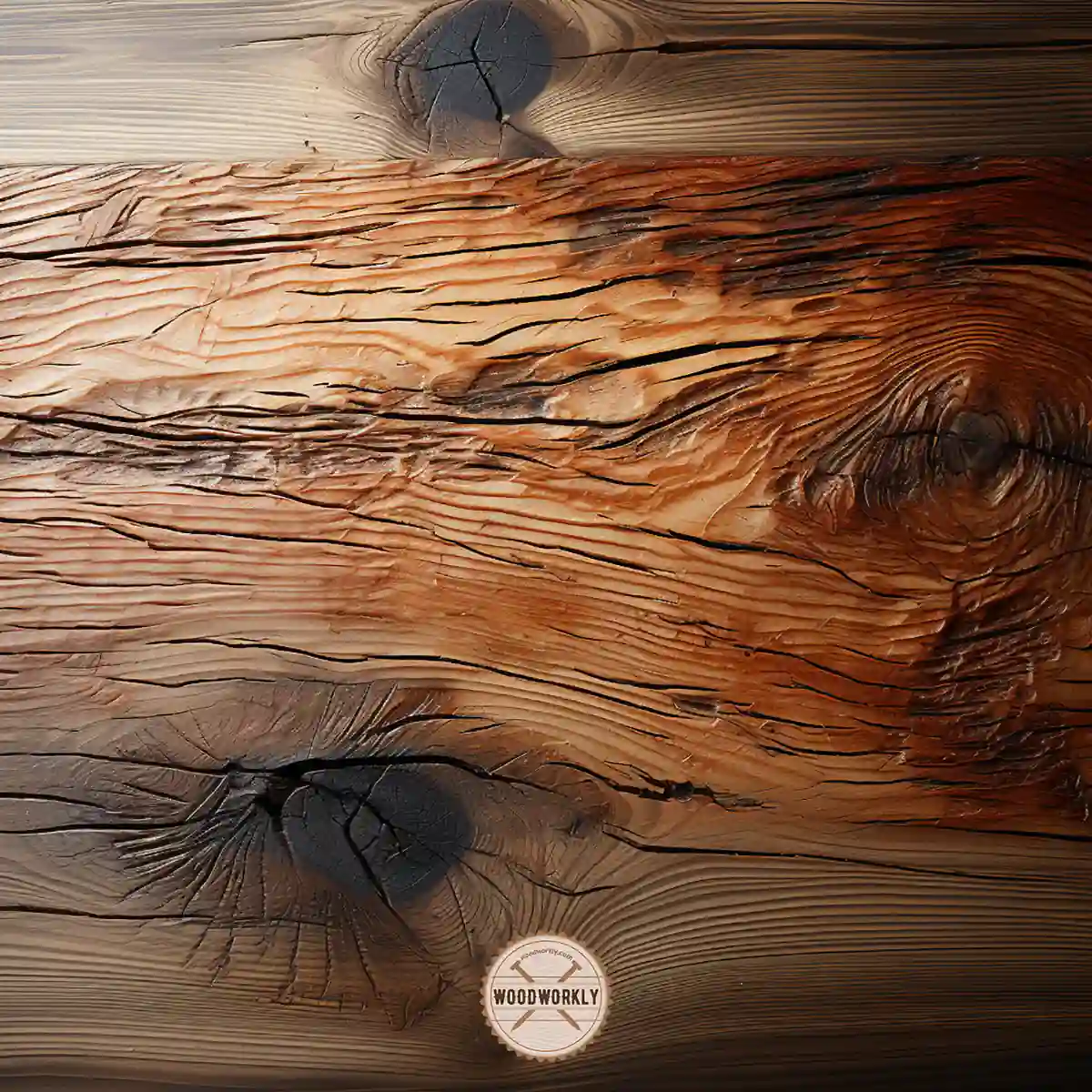
5. Poor Durability
Veneer wood has excellent strength and dimensional stability in the long run. This is why it is used for different kinds of indoor and outdoor woodworking projects.
But over time, wood veneer can get a peel at the edges and corners by giving an unpleasant appearance.
Plus, wood veneer has a tendency to delaminate and blister over time. you cannot keep wood veneer furniture or woodwork untreated for so long.
Wood veneer has poor moisture resistance.
Therefore, water particles and liquids can easily pass through the wood veneer surface and damage the wood inside by losing the top layer. Moisture causes bubbles and buckling on the veneer wood surface.
As you can see even though wood veneer looks like solid wood, it doesn’t have some underrated qualities of solid woods like having a little bit of natural resistance to moisture, insect attacks, and more.
Plus, wood veneer has no resistance against UV light.
UV light damages the top layer of wood veneer and causes wood discoloration.
This mostly happens when you keep wood veneer furniture and other woodwork under direct sunlight.
Direct sunlight darkens and damages the wood veneer.
Therefore, wood veneer has poor durability under environmental elements like moisture, UV light, and insect attacks.
In order to improve the durability of wood veneer, you can treat it with wood sealant or any other wood finisher with UV inhibitors.
UV inhibitors are able to absorb UV light and prevent them from hitting the wood veneer surface to avoid the wood from getting damaged.
Plus, wood finishers prevent moisture and other liquids from penetrating wood veneer and protect the wood from bubbles and buckling.
Most wood finishers repel bugs and insects and are able to protect wood veneer furniture.
Likewise, with proper sealing and finishing, you’ll be able to improve wood durability with an enhanced wood appearance.
Therefore, finishing wood veneer with quality products is a must before using it.

6. Not Like Solid Woods
Even though wood veneers can get similar in look to solid woods, they don’t have that heaviness, luxurious look, versatility, better resistance, and excellent repairing ability like solid woods.
This is why most people tend to go for solid wood furniture over veneer considering their high durability and versatility.
Wood veneers are lightweight and don’t have that nice feeling compared to solid wood.
Solid woods are heavy, and you can tell their worthiness only by looking at the solid wood furniture made from hardwoods like Mahogany, Redwood.
Solid woods are durable and feel high quality compared to wood veneer.
Plus, you can repair and regrind solid wood repeatedly and use it for so long. Not like wood veneer. Cracks and scratches can be easily repaired in solid wood.
Solid woods are able to cool and regulate the room and outdoor temperature levels.
It feels more comfortable to live around solid woods since they help to circulate fresh air.
Solids woods are able to shape, drill, nail, and screw easily compared to wood veneer.
Therefore, when it comes to workability, solid woods and friendlier than wood veneer.
Solid woods are more environmentally friendly than wood veneer because they don’t contain gluing products like wood veneer which can be harmful to the environment.
Overall, solid woods are more beneficial and higher in quality than wood veneer.
Solid woods are harder, stronger, and more user-friendly than wood veneer.

7. Installation Is Difficult
Not like solid wood, wood veneer furniture, and other woodwork are hard to install, and you need to get assistance from professionals.
Wood veneers are hard to install even than laminates.
The air gap between the wood veneer needs to be removed properly to get a good finish as we wish. This cannot be done especially if you’re a beginner.
But when working with solid wood, you can learn basic skills and able to practice them with solid wood.
But working with wood veneer is extremely difficult and requires skilled workers since if the wood veneer gets accidentally damaged during the installation, repairing cannot be done quite easily as solid wood.
Wood slices need to be acclimated before compression or installation for better durability.
To do that you’ll have to keep wood sheets in a safe room for around 3 to 5 days. After that, you can take them for the installation process.
I highly recommend you get assistance from skilled professionals for the proper installation of wood veneer.
Not like solid wood, the installation of wood veneers can take a lot of time and effort. Which is not worth especially if you have enough budget to go for solid woods.
That’s it, folks! Now you have crystal-clear knowledge about the disadvantages of veneer wood with simple fixes to overcome those drawbacks.
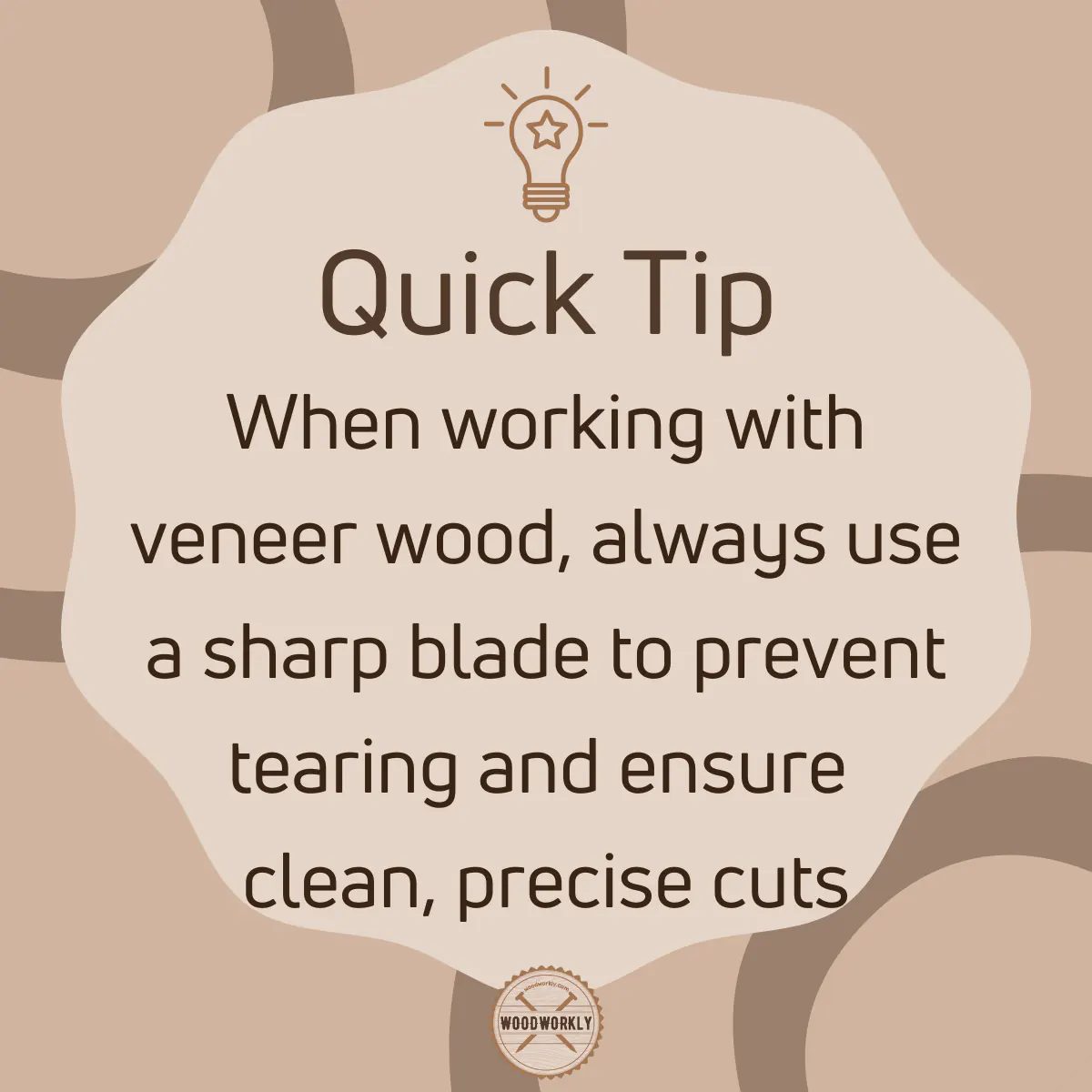
Is Veneer Better Than Solid Wood?
Wood veneer is better than solid wood only when it comes to price. wood veneer is more affordable than solid wood.
But solids wood has better quality, durability, strength, and good resistance to environmental elements than veneer.
Therefore, solid woods are better than veneer. Solid woods are easier to repair and able to grind again and again for so long.
But wood veneer has a high repairing cost and it cannot be repaired on most occasions.
Solid woods are easier to stain and finish than wood veneer.
Solid woods have a porous structure that absorb wood stain so well and are able to get excellent protection with enhanced protection much easier than wood veneer.
The luxurious feel and look of solid wood cannot get with wood veneer. Solid woods are the first choice of any woodworker because of their excellent qualities.
Does Wood Veneer Damage Easily?
Yes, wood veneer gets damaged easily because it has no scratch or dent resistance.
Once wood veneer gets damaged, it is nearly impossible to repair, and the cost is significantly higher than repairing solid wood.
Wood veneer has poor resistance to water damage and water particles can easily pass-through wood veneer and lose its top surface and can cause the wood veneer to rot and decay quite easily.
Plus, wood veneer has no resistance against insects and which attack wood veneer and damage the surface by losing the wood stability and giving an unpleasant appearance to the wood.
Applying a proper sealant or wood finisher is the only option to prevent the wood veneer from getting damaged by moisture, scratches, insect attacks, and UV light.
Is Wood Veneer Any Good?
Wood veneer is cheaper, lightweight, and able to use for any kind of woodworking project with proper treatment. There’re so many benefits of using wood veneer.
Here’re some popular uses of wood veneer,
- Cabinets
- Doors
- Windows
- Furniture
- Outdoor furniture
- Flooring
- Ceiling
- Interior decoration
As you can see, wood veneer can literally use for anything with no issues.
You just have to select the wood veneer that suits most for your purpose because there’re so many variations of wood veneer made using different kinds of natural wood slices.
Each of them has its unique properties.
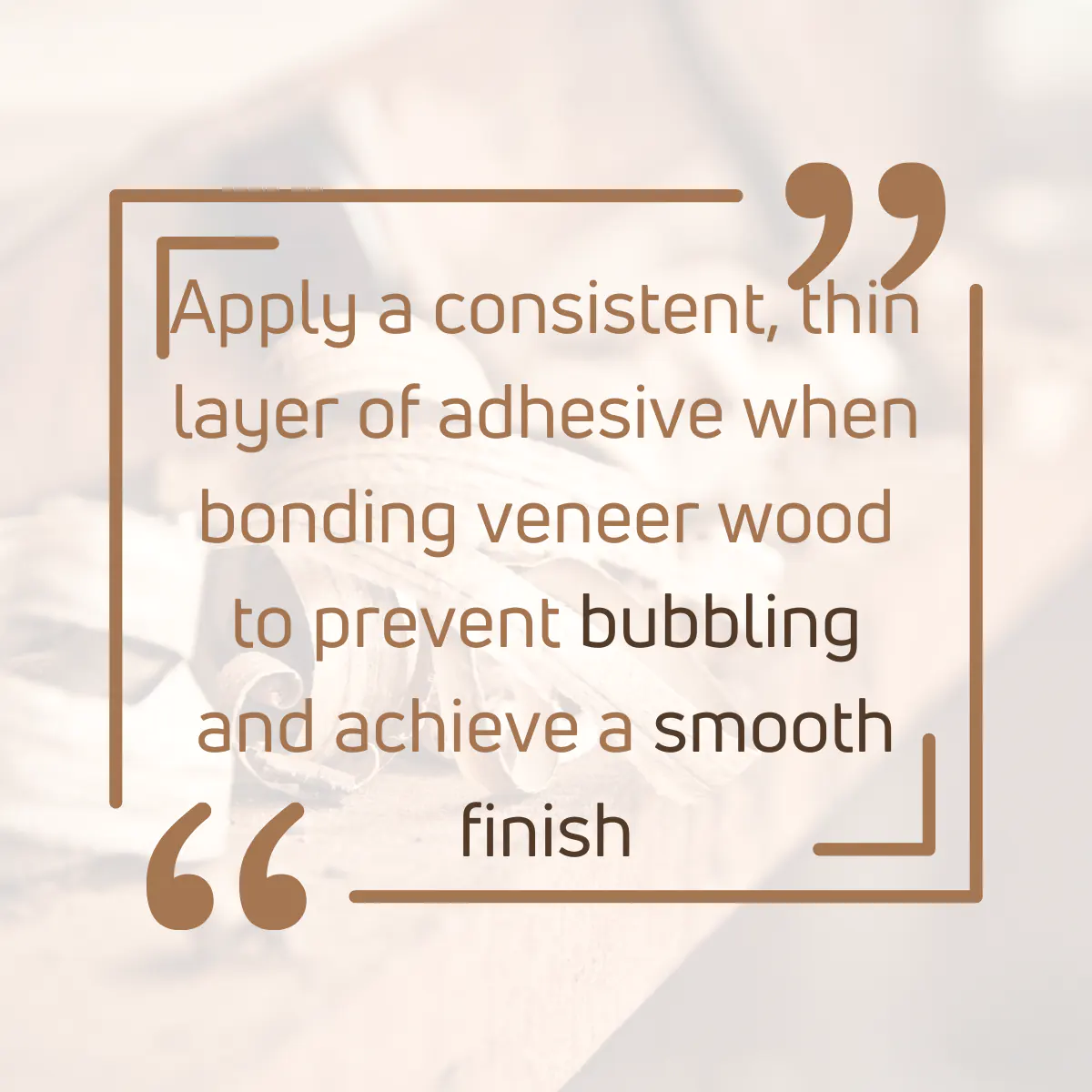
Are Wood Veneers Toxic?
Wood veneers are non-toxic and able to use for making kitchen bowls, birdhouses, children’s toys, and other projects.
Wood veneers do not have any harmful chemicals that are bad for us. They are free of Volatile Organic Compounds (VOC).
But you need to have a clear idea about what type of adhesives has used to glue wood slices when making wood veneer because some of the adhesives may contain toxic compounds.
Other than that, wood veneers are 100% safe to use.
So, let’s answer some frequently asked questions.
FAQs
Why do veneer woods require regular maintenance?
Veneer woods, unlike solid woods, need consistent upkeep because they lack natural resistance to environmental elements. Without proper care, they can easily succumb to moisture, UV light, and insect attacks.
How does moisture negatively impact veneer wood?
Moisture can easily penetrate veneer wood surfaces, leading to internal damage, rot, and surface deformities such as bubbling or buckling.
How does veneer wood handle physical impacts?
Veneer wood is generally softer than solid wood, making it more susceptible to scratches, dents, and damage from impacts or sharp objects.
How does the durability of veneer wood compare to solid wood?
Over time, veneer wood may delaminate, peel at the edges, and become discolored under UV light, making it less durable than solid wood in terms of resistance to environmental elements.
Are there challenges in installing veneer wood compared to solid wood?
Yes, veneer wood installations are more intricate than solid wood, often requiring professional assistance and additional steps like wood sheet acclimation to ensure durability.
Did I cover all you wanted to know about: Disadvantages of Veneer Wood?
In this article, I have deeply discussed the disadvantages of veneer wood in detail with the best possible solution for each one of them.
Disadvantages of veneer wood are requiring regular maintenance, susceptible to water damage and insect attacks, being prone to scratches, being difficult to repair, having poor durability, not having good qualities like solid woods, and having installation difficulty.
Hope you have gained a good knowledge about veneer wood disadvantages and how to overcome them to get the maximum benefits.
Try to use veneer wood for your next woodworking project and see how they behave and try to learn new woodworking skills with them. Happy woodworking!
Excellent piece of work.thanks for all the info.